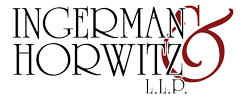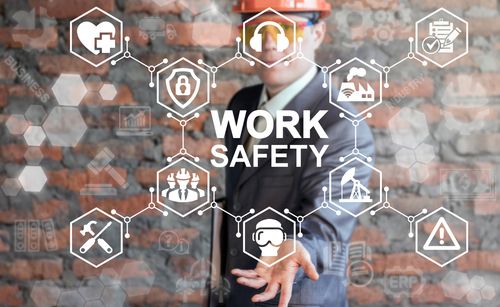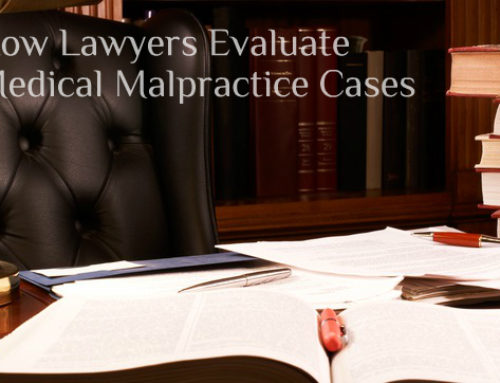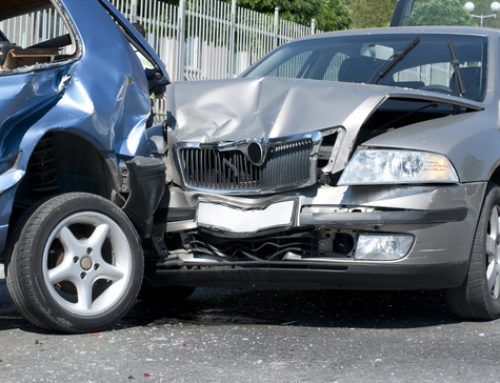No matter your work environment, occupational hazards can put your health and safety at risk. Even what seems like the most benign workplace may have unseen risks you do not know about. This could include anything from unidentified chemicals in the janitor’s closet to loud noises affecting your hearing.
The question you must ask yourself is “Do I understand all the occupational hazards in my workplace?”
Use this guide to help you to better recognize the types of risks you may face in your work environment. This guide is meant to show you some of the most common hazards you can face in a variety of work locations. You’ll also learn how to identify potential issues at your job site along with methods to prevent a personal injury or other accident.
Never forget that knowledge and awareness are the best tools for keeping you safe at work. The more you know about hazards and risks, the better you can protect yourself. Use this guide to stay safe and better understand what to look out for – no matter where your job takes you.
Defining Occupational Hazards and Common Examples
Simply stated, occupational hazards represent any type of condition, situation, object, procedure, or requirement which can injure you at work.
These dangers extend to an extremely broad range of differing factors. Further, the exact dangers you may face will always vary based on your job, workspace, and even the current conditions on a specific day.
You can easily organize work dangers into four categories:
- Physical
The most commonly recognized hazard, physical risk comes from all sorts of conditions that may affect your body.
Some of the most frequent physical injuries come from the following:
- Slips and falls
- Objects falling
- Falls from rooftops, ladders, or other heights
- Loud noises affecting hearing
- Equipment or machinery
- Cars and other motor vehicles
- Chemical
These hazards occur any time you may become exposed to chemicals at your job. Exposure here could mean several different things. And the effects of these injuries can also vary immensely depending on the type of chemical, length of exposure, environment, and other factors.
Examples of chemical exposure include:
- Liquid chemical spills
- Frozen chemical burns
- Inhalation of vapors or fumes
- Gases and other fuels
- Biological
Biological hazards are most common in the healthcare field. These are disease and infection risks from working with people, animals, or other biological materials.
Some of the more frequent biological injuries come from:
- Exposure to blood or bodily fluids
- Animal bites
- Insect bites
- Exposure to airborne bacteria or viruses
- Waterborne diseases
- Handling infected food, equipment or machinery
- Ergonomic
Ergonomic dangers relate more directly to your body. These are often confused with physical hazards. The difference is that ergonomic hazards relate to motions or actions affecting your body rather than physical factors acting on your body.
Ergonomics can be tricky to specify when it comes to hazards. After all, you must use your body no matter what job you have. But these dangers can pose a real risk on your health and safety – even in very subtle motions, actions or environments.
A few examples of ergonomic hazards are listed below:
- Repetitive motions or actions
- Bad posture (e.g. chairs and desks forcing you to lean)
- Poor lighting requiring excess eye strain
Recognizing Occupational Hazards in Your Workplace
The above list outlined several of the more common risks you may face in your daily work. However, this list certainly is not exhaustive. How can you better recognize hazards in your specific workplace location?
The good news is that OSHA has developed a convenient step-by-step process to better identify occupational hazards. Through a list of six action items, you can learn how to spot potential issues before you or another employee becomes injured.
Below, you’ll find a quick summary of each of those six action items:
- Information Collection on Hazards
Depending on your industry or work site, your employer may already offer a list of occupational hazards you should know. But this type of list (often in a manual of safety guidelines) may not represent your actual work environment.
In these cases, a thorough inspection of all the relevant information will be helpful. This includes manuals for any equipment you may be working on or near, chemical safety data, current or past safety analyses, and past injury/worker’s compensation reports.
- Inspection of Work Space for Problems
Speaking of your actual workplace, you must also remain aware of your environment over time. One of the problems with work-related risks is that they may appear after a certain period of time.
Think about a barrel of hazardous chemicals, for instance. It may be safely stored when first placed on a work site. But the chemicals could slowly degrade the barrel over several months and lead to a leak and exposure to unsafe substances.
For these reasons, regular inspections of your workplace are an essential way to mitigate risk. This includes operational inspections, maintenance logs, and related logs.
Remember that it’s your safety that is at risk in the workplace. That’s why you should feel comfortable enough to have access to this type of information – and to report anything which could lead to a workplace injury.
- Identification of Current Health Dangers
This step, while easier said than done, is an important one for your safety. Using the information above, you can learn to identify the exact risks you may face at work. To improve this process, you can organize risks using the four above-mentioned categories of physical, chemical, biological, and ergonomic dangers.
This is not a task you should feel obligated to complete on your own. Your employer should already have a fairly comprehensive list of risks already available for you to see. You can also consult with OSHA if necessary to get help from a professional trained to find all current risk factors at your workplace.
- Review of Incident Reports and Related Documentation
Prior injuries or problems can help you spot where future risks may be present. You can get a much clearer indication of what to look out for through these documents. You can also spot whether changes have been made to improve safety and prevent future incidents from happening.
A review of incident reports or injury logs can help you achieve this critical step. Investigating this information can help trace an injury beyond just a single factor or failure point. Instead, it can help you see how elements may have come together to lead to an injury. And, using this knowledge can help you better prevent future injuries to yourself or your colleagues.
- Verification of Emergency and Unusual Scenarios
In many cases, workplace injuries occur during an emergency or other nonroutine event. These situations often reveal several risks and occupational hazards you may not experience during a normal working day.
For example, you may work on a construction site with all the machinery and related risks clearly documented. However, what happens if a high intensity thunderstorm creates new risks with lightning and flooding?
While unusual or unlikely, this situation could lead to a variety of additional, unforeseen occupational hazards. This includes both the working conditions and any evacuation procedures.
Work to learn what to do in case of emergency or other unusual circumstances. That way, you will lower your risk of getting hurt should something like this ever occur.
- 6. Measuring of Controls and Priorities for Hazards
Part of the problem in decreasing your risk for injury may simply be the nature of the job. Your job may bring you near dangerous or potentially hazardous situations. Because of this, you need to prioritize these risks based on their dangers.
Obviously, the highest priority safety measures will relate to the conditions which can cause the most harm to you. Your risk analysis should weigh potential consequences against the chances of the dangerous situation occurring.
You must make sure you know what to do and when to do it when multiple safety problems happen. This also includes knowing interim controls to keep you and other workers protected until the problem can be corrected.
Always remember that your employer has a continual obligation to keep you and other employees protected. Never settle for unnecessary dangers or safety violations that could lead to an injury.
Preventative Safety Measures
Identification is only one half of the battle against injuries. Another highly important piece of the puzzle is preventing safety issues altogether. Here are a few preventative tips to ensure you stay protected at work.
Maintain Control Over Hazards
As mentioned, many jobs necessarily include risk factors. The key to preventing injuries comes by maintaining effective management and control over those risks.
Remember that any risk is a combination of a hazard and your potential exposure to it. Therefore, you can reduce risk in one of two ways:
- Remove or manage the hazard itself
- Remove or reduce your exposure to that hazard
Controlling mechanisms for risk factors include anything from emergency shutoff switches to fire extinguishers or mandated employee breaks. The more control your workplace has over risks, the more likely you will stay safe.
Proactively Monitor and Inspect Potential Risks
The only way you can identify ongoing risks is by continually monitoring your work site. Consequently, you can only prevent accidents or injuries by remaining proactive yourself.
To demonstrate this, imagine if you worked in an office where you had to run an ethernet cable along the floor to your workstation. You taped the cable down to the carpet to prevent tripping over it and falling. However, all it takes is a few months of wear-and-tear and that tape could expose the cable – and a tripping risk. If you don’t remain proactive, you could easily forget about this cable, trip over it, and become injured.
Regularly inspect the places you work and the items you work with. Never take your own bodily safety for granted, either. Even a small environmental change could lead to a more hazardous workspace over time.
No Shortcuts that Overlook Safety Protocol
Practically every type of job comes with a responsibility to complete it as quickly and efficiently as possible. But this should never mean that you should sacrifice safety for speed.
To put this in perspective, imagine working at a big box retailer on a night shift to stock a delivery. You’re short-staffed for the night, so you decide to run back-and-forth and throw heavy items onto the shelf. This puts you and other employees around you at a much higher chance to get injured.
Don’t ever take shortcuts that put you or other employees’ safety at risk. In the same breath, never allow your employer to pressure you into acting in a way that puts your safety second.
Speak Up About Risk Factors
Much of the above guide has shown higher-order steps and processes for preventing injury. In many cases, you simply can’t accomplish many of these points as an employee.
In these cases, your best step for accident prevention is to use your voice and speak up. Don’t be afraid to alert your supervisor or management if you spot a potential safety risk. And never allow an employer to put you into an unsafe environment where you’re uncomfortable working.
Never forget that a great deal of your safety is in your hands. Again, a proactive approach to your work will better protect you from injury or accident.
Get the Help You Need for Workplace Injuries
Recognizing occupational hazards is a critical first step to ensuring your safety at work. The more you understand your risks, the better you can prevent unnecessary injuries.
However, sometimes accidents happen even when you remain as careful and vigilant as possible. The last thing you need is to feel lost or unsure about what to do when faced with a workplace injury.
This is where the personal injury attorneys at Ingerman & Horwitz can help. Their years of experience have netted hundreds of millions of dollars recovered for victims of workplace injuries. And with no fees unless you win, you can rest easy knowing you have an ally on your side.
Don’t let occupational hazards and injuries continue to impact your life. Instead, understand your rights and speak with the experts who will keep you protected. Contact Ingerman & Horwitz online today for a no-pressure consultation to learn your options.















